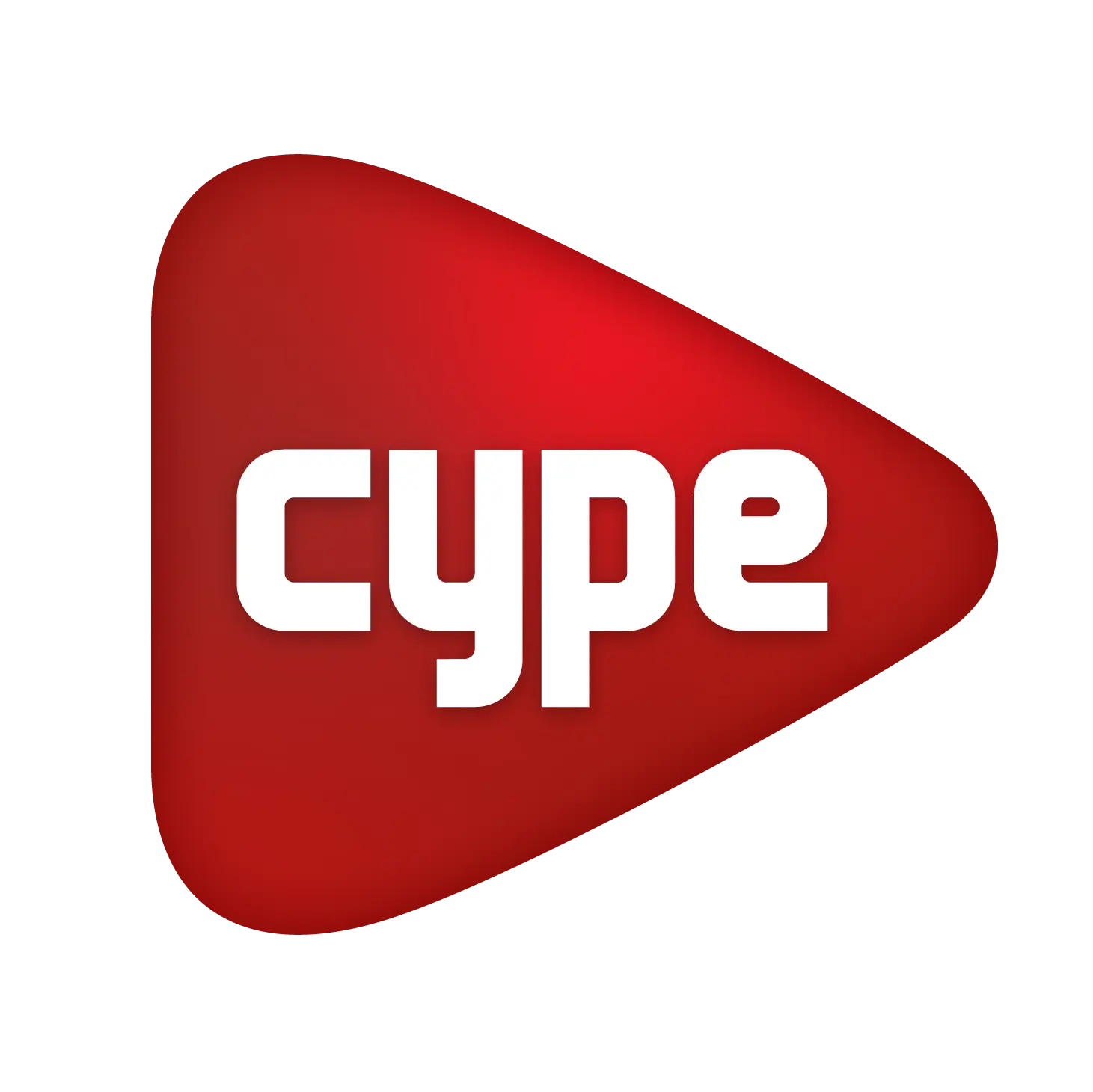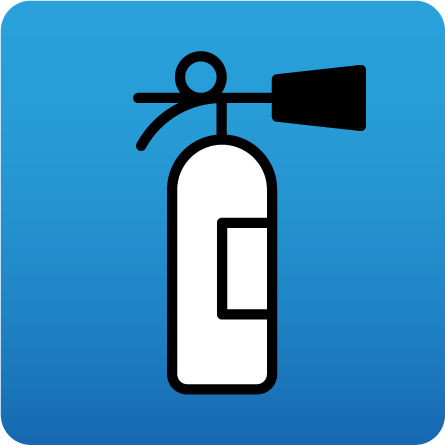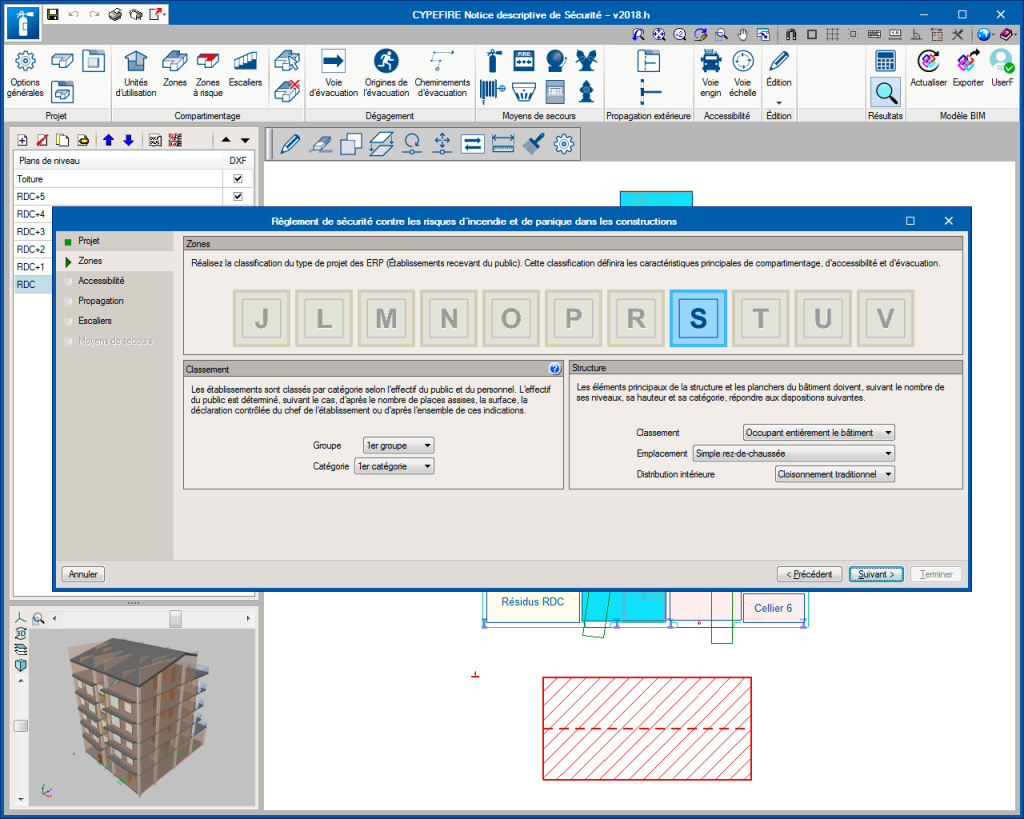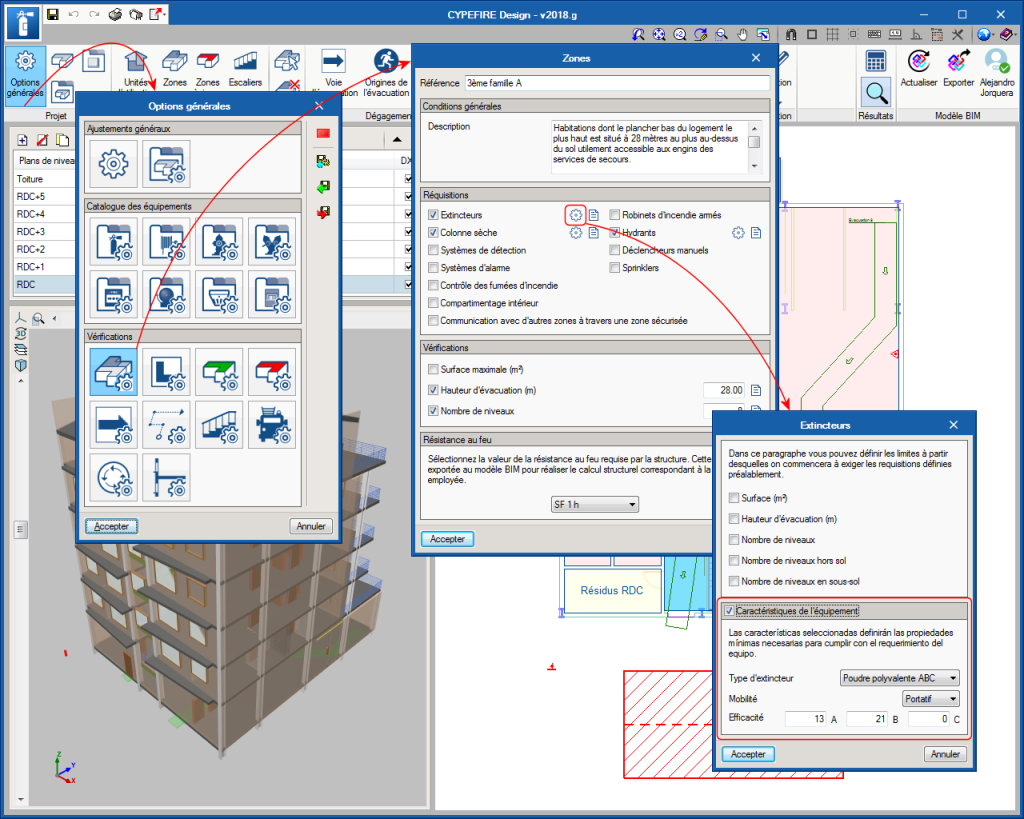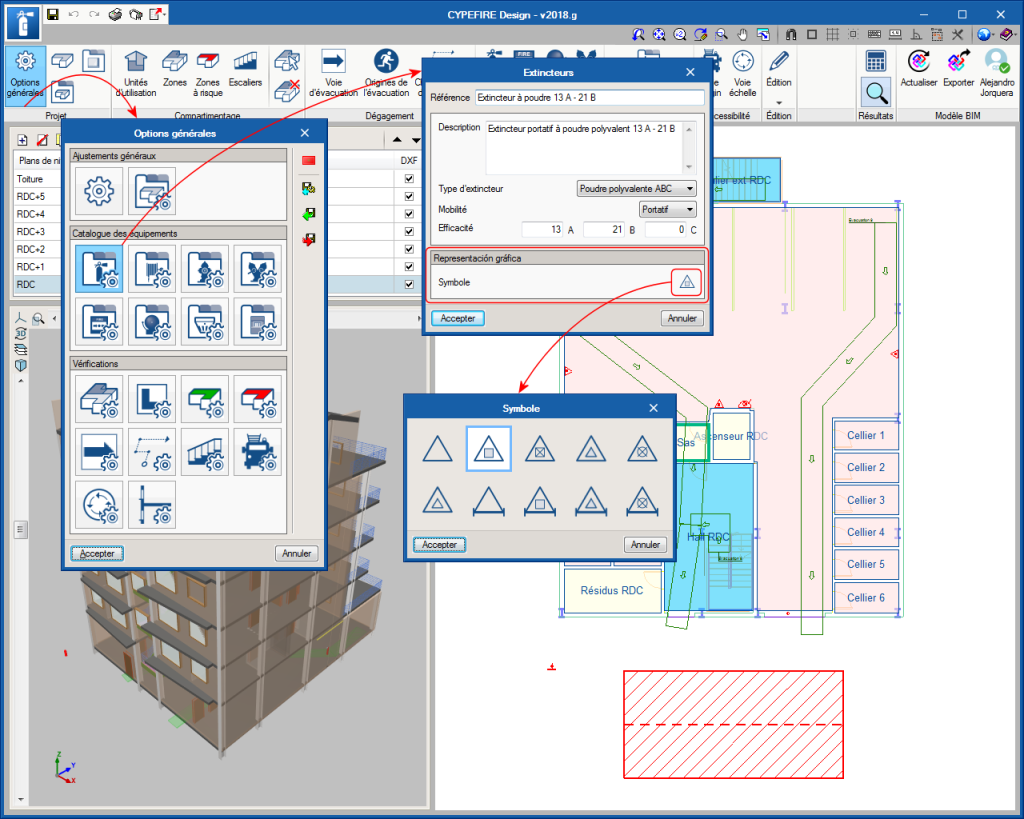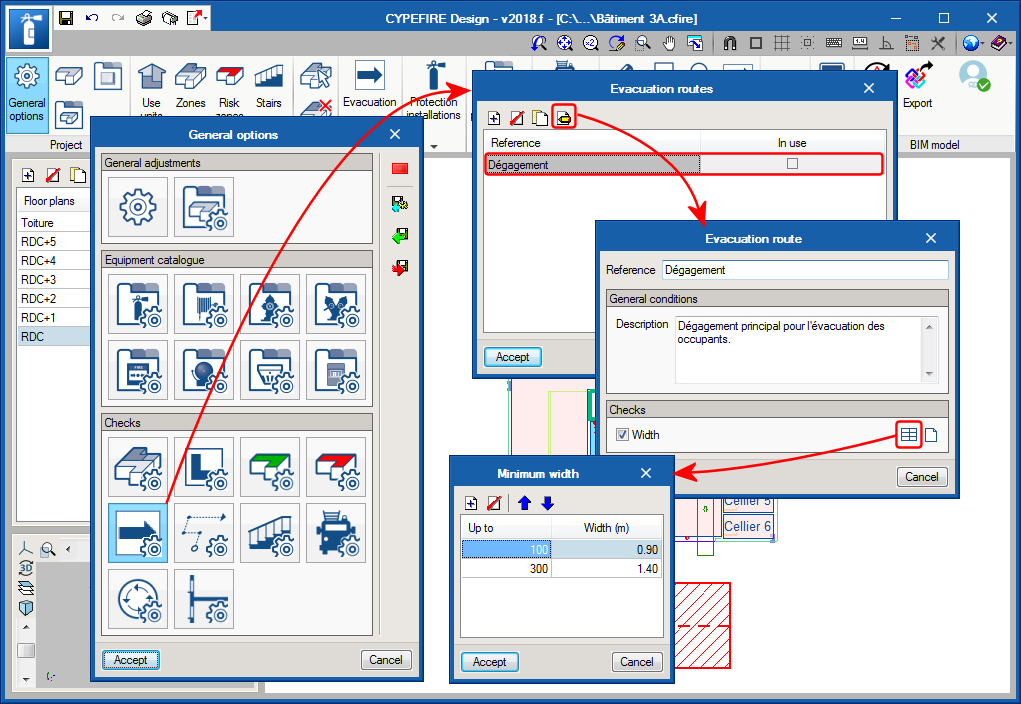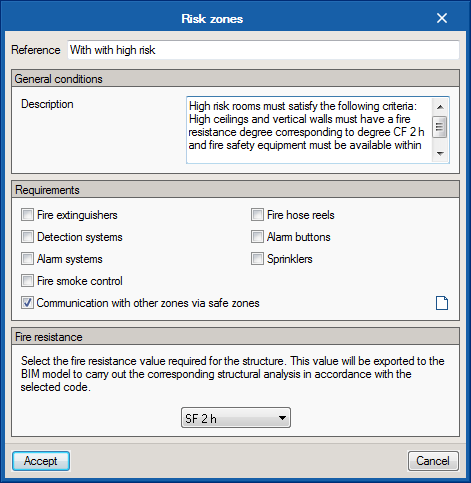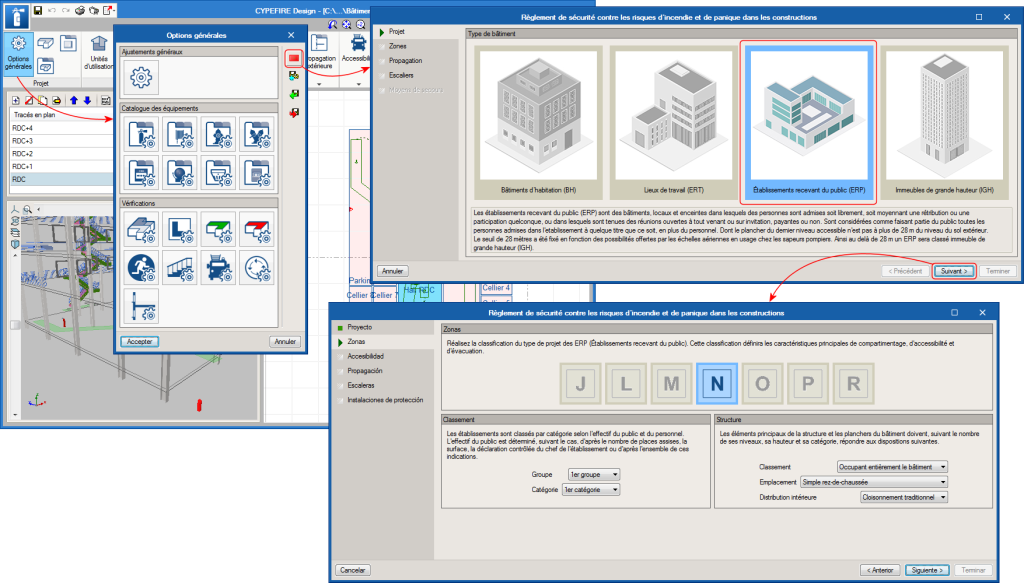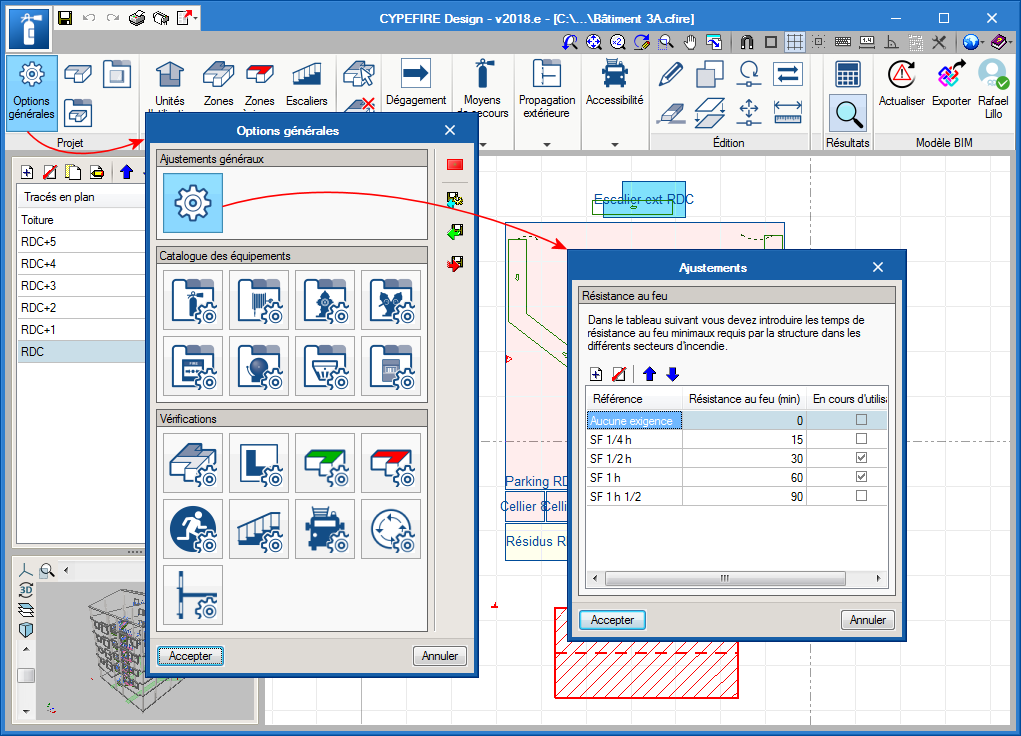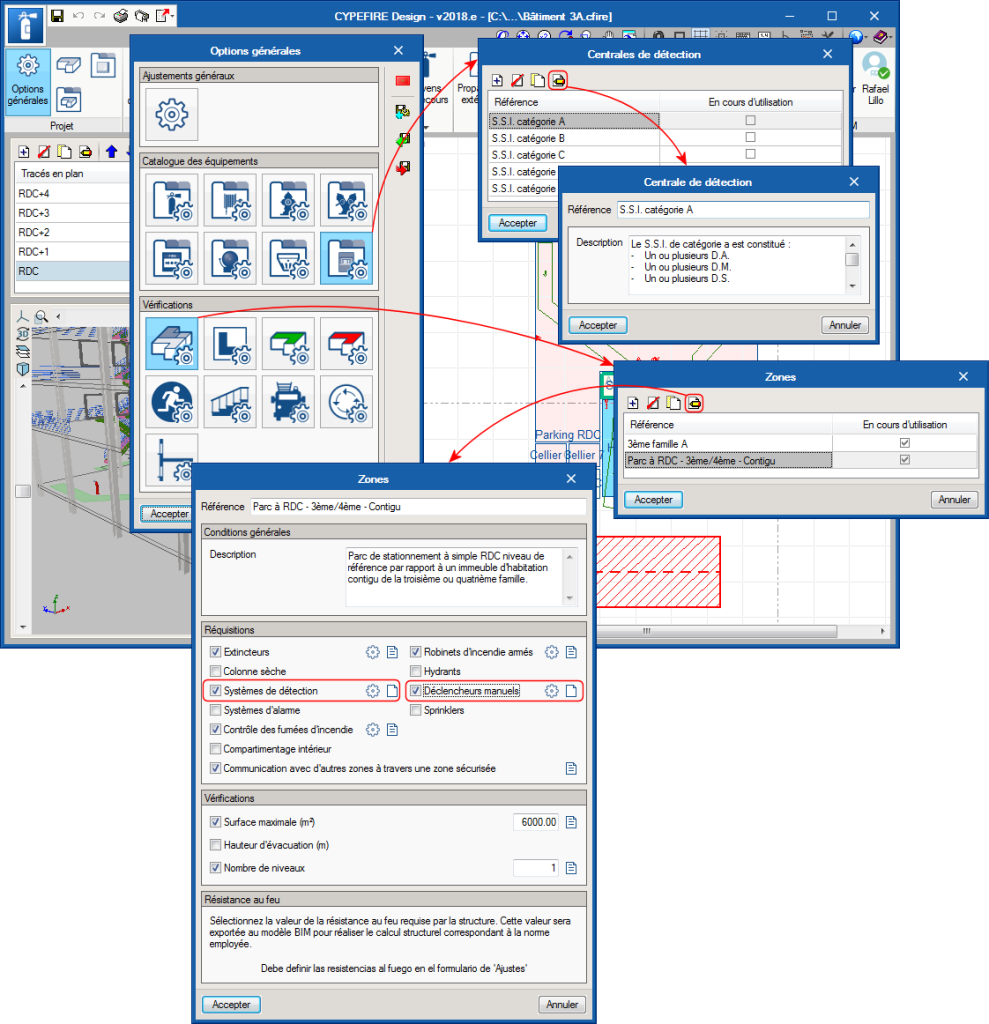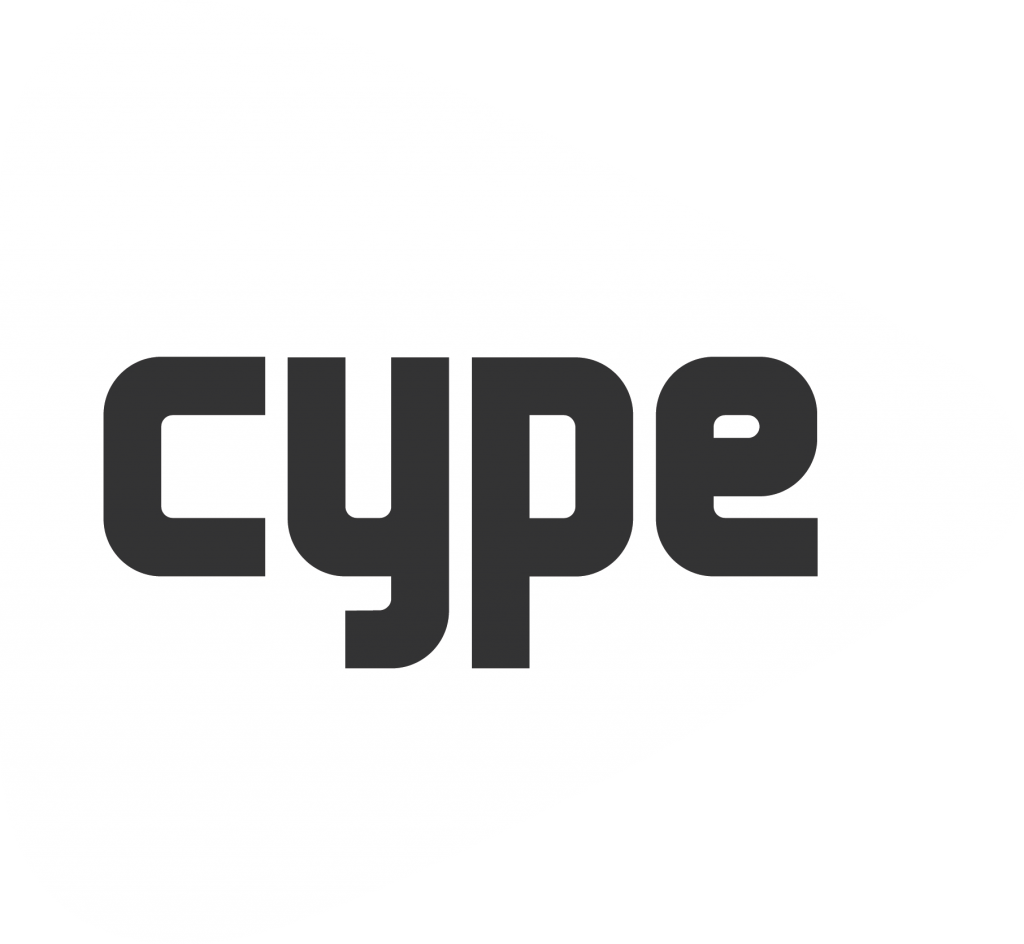Amongst the types of projects of the Moroccan code (Règlement de sécurité contre les risques d’incendie et de panique dans les constructions) that can be solved by the program, the following types of projects have been added for “Établissements recevant du public (ERP)”:
- Établissements recevant du public: Bibliothèques, centres de documentation (Type S).
- Établissements recevant du public: Salles d’expositions (Type T).
- Établissements recevant du public: Établissements sanitaires (Type U).
- Établissements recevant du public: Établissements de culte (Type V).
